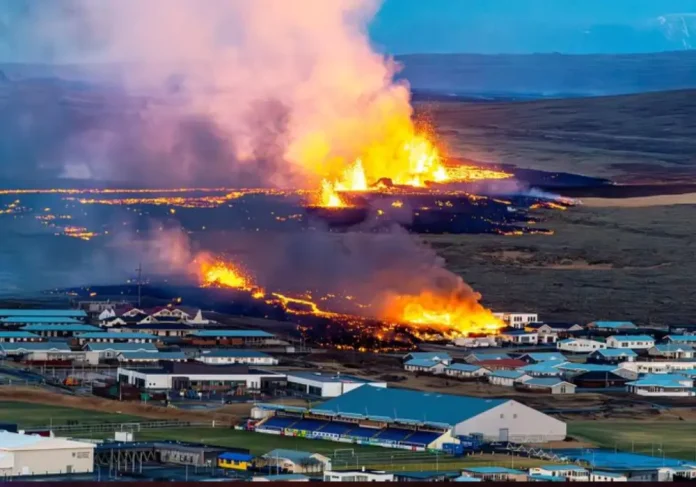In a series of events since 2021, Iceland has witnessed eight volcanic eruptions that have significantly disrupted daily life. These eruptions, causing evacuations and impacting tourism and utilities, mark a resurgence of volcanic activity after an 800-year dormancy period.
Scientists analyzing seismic and geochemical data have cautioned that these eruptions are likely to continue intermittently for years to decades. This ongoing volcanic activity poses challenges for local residents and authorities, highlighting the unpredictable nature of Iceland’s geological landscape.
Also Read: Peru to Cease Labeling Transgender Individuals as Mentally Ill
Iceland has been rocked by a series of eight volcanic eruptions since 2021, disrupting daily life with evacuations and impacting tourism and utilities. This surge in volcanic activity on the Reykjanes Peninsula follows an 800-year dormancy period, signaling a significant geological shift.
Authorities have declared a state of emergency in the southwestern region, home to 70% of Iceland’s population, its sole international airport, and crucial geothermal power plants. The latest eruption, spanning from May through June, forced multiple evacuations of the Blue Lagoon geothermal spa, a beloved tourist spot, for the third time in just over two months.
Situated within an hour’s drive from Reykjavík, these eruptions pose substantial economic risks and have left evacuated communities uncertain about their return.
A team of international scientists has closely monitored the volcanoes over the past three years, utilizing seismic tomography imaging and lava composition analysis. Their findings suggest that the ongoing volcanic activity could persist intermittently for years to decades, possibly extending over centuries. This unpredictable resurgence highlights Iceland’s volatile geological nature and underscores the challenges facing local authorities and residents alike.



